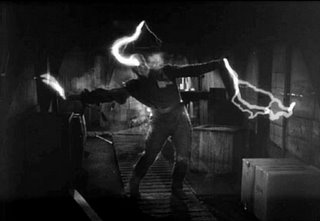There is No Known Passage
 Among our correspondents here at "The Face" is the semi-legendary Fred Spark. His calling card defines him as a "Morbid Archivist," but he's being modest -- not to mention obscurantist. In addition to his hundreds of private investigations and manuscript procurements for wealthy (and anonymous) clients, he has been an archeologist on the Andes plateau; product tester and resident ethicist for the now-defunct Surveillance Technician's Quarterly; crafter of birchbark canoes in northern Minnesota; surveyor for the United States Department of Agriculture; manager of an Associated Supermarket in Redwood City, California; orderly at a retirement village in Ocala, Florida; industrial arts teacher at a grade school in Midlothian, Texas; "tonal consultant" at the Reuter Pipe Organ Factory in Lawrence, Kansas; groundskeeper on the campus of Yale University (where he is rumored to have taken photos of the inner sanctum of the Skull and Bones society); and all-around imp of the perverse. He is also known -- though not publicly -- as the foremost authority on the life and philosophies of James Jesus Angleton, coordinator during the Cold War years of the CIA's crack counterintelligence unit.
Among our correspondents here at "The Face" is the semi-legendary Fred Spark. His calling card defines him as a "Morbid Archivist," but he's being modest -- not to mention obscurantist. In addition to his hundreds of private investigations and manuscript procurements for wealthy (and anonymous) clients, he has been an archeologist on the Andes plateau; product tester and resident ethicist for the now-defunct Surveillance Technician's Quarterly; crafter of birchbark canoes in northern Minnesota; surveyor for the United States Department of Agriculture; manager of an Associated Supermarket in Redwood City, California; orderly at a retirement village in Ocala, Florida; industrial arts teacher at a grade school in Midlothian, Texas; "tonal consultant" at the Reuter Pipe Organ Factory in Lawrence, Kansas; groundskeeper on the campus of Yale University (where he is rumored to have taken photos of the inner sanctum of the Skull and Bones society); and all-around imp of the perverse. He is also known -- though not publicly -- as the foremost authority on the life and philosophies of James Jesus Angleton, coordinator during the Cold War years of the CIA's crack counterintelligence unit. I wish you could meet Fred. Like a Nabokov villain, he appears and reappears at will, in wildly divergent forms yet always vaguely familiar, leaving only a scrawled signature in a Motel 6 register or defaced menu from a rural-route diner as evidence of his passing. Those few of us in his orbit exchange excited stories of our encounters. I have met him only once -- a brief, awkward midnight rendezvous by the enormous black cube at the center of Astor Place in Manhattan. Five years later, I am still working the chill out of my bones.
It's Fred's peculiar gift, not to solve mysteries, but to find them -- and then to pass them on, by way of his many media conduits (witting and unwitting), into the general stream of public knowledge. It's long been rumored that his career began in the US military in World War II, that he was a key player in the so-called "Roswell" cover-up, and that most of what we know or suspect about the strange occurrences near Corona, New Mexico in 1947 is due to his leaks of vital information. Other speculations have placed him at or near the sites of most significant post-war American conspiracy theories. Fred Spark is sufficiently elusive to make even the unlikeliest scenarios virtually plausible; still, one knows enough to be suspicious of any theory that claims to encompass everything.
Fred has a different method of alerting each individual on his list of "friendlies." The method he has assigned me is this:
I find on my cell phone a voice-mail message consisting of a music box playing "The Lincolnshire Poacher," recorded from a short-wave radio "numbers" station -- a government-owned transmitting outlet for encoded espionage messages. (I finally discovered that this unvarying piece was actually Track 6 from Disc 1 of The Conet Project; but I still don't know which government{s} is/are involved, or what the message conveyed might be). I then let Fred know I've received his alert by posting a message to the "comments" section of a heavily-trafficked "Sex and the City" fan site -- a message consisting of exactly eight lines of romantic verse from any prominent 19th century English poet. This posting must be unsigned but for a single letter, that being the third letter of the middle name of the poet in question. Fred then sends his message through encrypted lines left in text-file form at an auxiliary mirror site of one of the smaller, less stable file-hosting services. (He employs a basic encryption schema recognizable to anyone who has read Robert Graysmith's book on the Zodiac murders.)
Fred dispatched me this item earlier today. The mansion in question stands a mere 10 blocks south and three west of where I work every Monday afternoon. Fred may be trying to tell me something. I don't know what it is. But I'll be nosing around.
 Good to hear from you, Fred.
Good to hear from you, Fred.Stay safe.
Wherever you are tonight.





